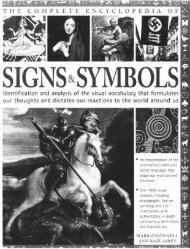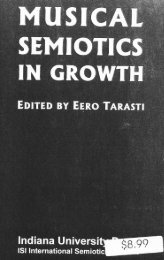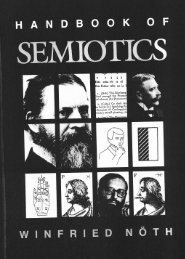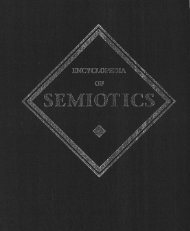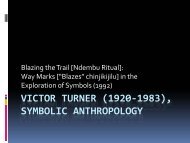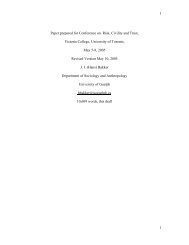Semiotics & Dis/ability - SemioticSigns.com
Semiotics & Dis/ability - SemioticSigns.com
Semiotics & Dis/ability - SemioticSigns.com
You also want an ePaper? Increase the reach of your titles
YUMPU automatically turns print PDFs into web optimized ePapers that Google loves.
VIII SEMIOTICS<br />
AND DIS/ABILITY<br />
always' In the tl-rree years rhat we have been working on this we have<br />
also co-directed dissertations, written journar articres, and shared many<br />
a happy lunch.<br />
we dedicate this book to Dr. Rita Myers. she was a cherished col-<br />
a wise<br />
l:?.tu.,<br />
voice, and one who worked iilig.ntly in the fielJoi ..hr_<br />
bilitation counseling. Although we miss her, we are rhe richer for having<br />
known her and for having her guidance.<br />
Tr<br />
INIRooucrroN<br />
his.book emerged out of numerous<br />
-l conversations with coileagues and<br />
friends after we decided to appry a semiotic reading ,o ,h. .u..flay rives<br />
of people categorized as having disabilities. we wiihed to takeour indi_<br />
vidual and collective experience beyond the narratives en<strong>com</strong>passed in<br />
the disciplines of special education, earry childhood, human'deuelopment'<br />
or rehabilitation<br />
_counseling and to use semiotics as a dynamic<br />
analytical tool. \X/e wished-to uncover experience as shaped bi *or.<br />
than.disco,rse, cognitive features, and ecological factois. v.<br />
searching for the personal within the social; the stories of resisrance, -.r.<br />
counter-naming, and <strong>com</strong>plicating "<strong>com</strong>mon sense" knowledge and<br />
perception of what constitures difference. $7e hope that this uoluri. .ontributes<br />
to the opening of sign systems, to th. prr.e, of possibility for<br />
others that these aurhors have crafted for themselv.r. \Xz. asked each<br />
a.uthor to problematize their experience, to consider the markers of lives<br />
that are considered "different." Did they believe there were caregories of<br />
difference which definitively separated Lu-"n beings from one Inother,<br />
or,, when they examined the desires, goars, diremmis, and rerationships<br />
which their narratives en<strong>com</strong>prrr.J, *... they repositioning their<br />
understandings in a more inclusive way back into ihe milieu"of all<br />
human experience?<br />
_ As long ago as 1929, yirginia Voolf called for people to con_<br />
tribute and make known their understandings, "for books hru. , way of<br />
influencing what is meanr by reality; (p. 90). She deplored her<br />
ina.bility_ to draw upon the voices of individuals whose experienc., and<br />
reflected discourse of living would have contributed ro hoi she framed<br />
her own life and how she could <strong>com</strong>e to know the worrd. Those absenr<br />
discourses, that "emptiness on the shelf" (p. 44l,which woolf lamented<br />
were represented by the so-called "maiority" as an affirming silence, as<br />
thgugh all experiences y:re adequately repiesented by whati"as present<br />
in books on "the" shelf. However, that trrat silence, did .,o,<br />
recognize her life or the experience of much<br />
"br.n..,<br />
of the wider population.<br />
Then, as now, there was a discourse that created an ,,;s,'' and an



